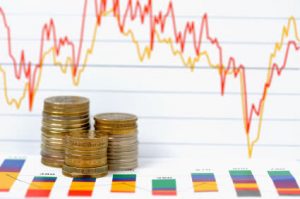Dividend Value Builder Newsletter
TED Spread & LIBOR: What Every Investor Should Know
The TED Spread is the difference between the 3 month T-bill rate and the 3 month London Inter Bank Offered Rate (LIBOR). It is important because it is an indicator of perceived economic risk, monetary liquidity, and perceived credit risk of the global financial banking system. Therefore it should be one of your indicators when considering investment risk.
What is LIBOR?
The London Inter Bank Offered Rate (LIBOR) is the average interest rate at which global banks borrow and lend from each other. It’s purpose is to have a benchmark for bank to bank transactions. The index is used widely around the globe to set the interest rate of various variable rate loans.
How the TED Spread Works
United States Treasury Bill rates are considered the risk free rate because they are considered the safest credit in the world. By comparing the risk free rate to any other interest rate an analyst can determine the perceived difference in risk.
Investors, economists, and financial analysts use the TED spread to evaluate the level of risk in the financial system. Comparing the risk free rate to LIBOR provides an indication of the risk the global markets perceive in the global banking system.
A rising or high TED spread will often precede a downturn in the stock market because it indicates increasing risk of bank defaults and economic instability. A falling or low TED spread would indicate low risk of bank defaults and economic stability.
This is the difference between a risk free investment (3-month T-bills) and the interest rate at which global banks borrow and lend from each other. For example if the 3 month T-bill is 1.85% and the 3 month Libor rate is 2.35%, the TED spread would be 0.50.
A TED spread of less that .50 would be considered a low spread and indicate that the markets perceive only a small amount of financial risk. A TED spread greater than 1.0 would indicate greater uncertainty and at least some risk in the global financial banking system. The spread went as high as 4.5 in the 2007-09 financial crises.
Why the TED Spread is Important
The TED Spread is important to investment analysis because it is a simple indicator of the price of money (interest rate) in the global banking system. It is an indicator of the solvency of financial institutions, monetary liquidity, and perceived risk of the financial system.
Related Reading: 5 Portfolio Risk Management Strategies
Minimize Large Portfolio Drawdowns
Invest With Confidence in Less Time - Manage Your Portfolio Without Behavioral Errors

